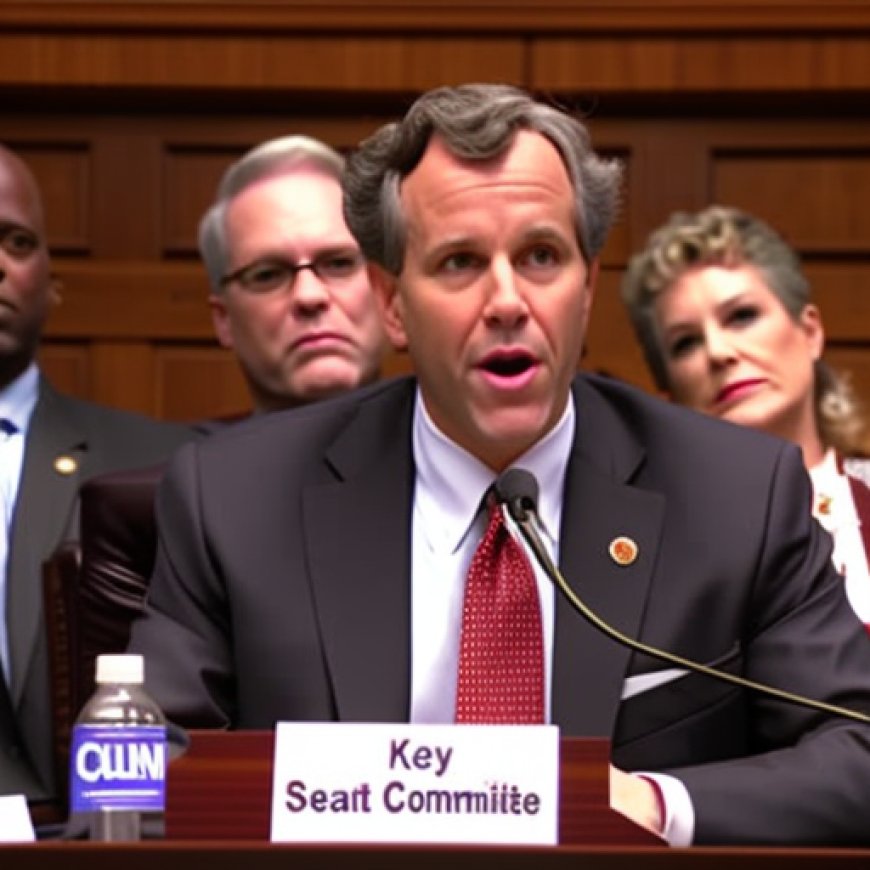Key Senate Committee Passes Brown’s Bill to Extend Great Lakes Protections | U.S. Senator Sherrod Brown of Ohio
Key Senate Committee Passes Brown's Bill to Extend Great Lakes Protections Senator Sherrod Brown


Sustainable Development Goals (SDGs) and the Great Lakes Restoration Initiative Act of 2024

Introduction
Today, the Senate Environment and Public Works Committee passed U.S. Senator Sherrod Brown’s (D-OH) bipartisan Great Lakes Restoration Initiative Act of 2024. This legislation aims to continue the mission of keeping the Great Lakes healthy for businesses and families by cleaning up and preventing pollution, as well as protecting the coastline. The bill also focuses on ensuring clean drinking water for Ohioans, preventing the spread of invasive species, and addressing environmentally damaged areas. By extending the Great Lakes Restoration Initiative (GLRI) for another five years through 2031 and increasing annual investment levels, this bill seeks to make a significant impact on the region’s sustainability.
Significance of the Sustainable Development Goals (SDGs)
The Great Lakes Restoration Initiative Act of 2024 aligns with several Sustainable Development Goals (SDGs) established by the United Nations. These goals include:
- Goal 6: Clean Water and Sanitation
- Goal 14: Life Below Water
- Goal 15: Life on Land
Impact on Lake Erie and Ohio
Senator Brown emphasizes the importance of this legislation for Lake Erie, which provides drinking water to 11 million people and supports various Ohio businesses, families, boaters, and anglers. He acknowledges the success of the Great Lakes Restoration Initiative as a vital environmental effort that contributes to Ohio’s economy. With the support of the Bipartisan Infrastructure Law, the initiative has become even more effective. Senator Brown is committed to getting this bill to the President’s desk to protect Lake Erie and its tributaries for current and future generations.
Past Achievements and Investments
Senator Brown has been a longstanding advocate for Lake Erie and has worked tirelessly to secure wins for its conservation and clean water programs. He played a crucial role in securing a significant investment for the Great Lakes Restoration Initiative (GLRI) through the Bipartisan Infrastructure Law, which was signed into law in 2021.
Conclusion
The passage of the Great Lakes Restoration Initiative Act of 2024 by the Senate Environment and Public Works Committee marks an important step towards preserving the health of Lake Erie and ensuring clean drinking water for Ohioans. By aligning with the Sustainable Development Goals (SDGs), this legislation demonstrates a commitment to environmental sustainability and the well-being of communities that rely on the Great Lakes region. The bill’s journey to the full Senate for a vote represents a continued effort to protect Lake Erie and its tributaries for present and future generations.
SDGs, Targets, and Indicators
-
SDG 6: Clean Water and Sanitation
- Target 6.3: By 2030, improve water quality by reducing pollution, eliminating dumping, and minimizing release of hazardous chemicals and materials.
- Indicator: The article mentions that the legislation aims to protect coastline and habitats, prevent future contaminations, and clean up environmentally damaged “Areas of Concern,” which implies efforts to improve water quality and reduce pollution in the Great Lakes.
-
SDG 14: Life Below Water
- Target 14.1: By 2025, prevent and significantly reduce marine pollution of all kinds, particularly from land-based activities, including marine debris and nutrient pollution.
- Indicator: The article states that the legislation aims to clean up and prevent pollution in the Great Lakes, which includes addressing marine pollution from land-based activities.
-
SDG 15: Life on Land
- Target 15.1: By 2020, ensure the conservation, restoration, and sustainable use of terrestrial and inland freshwater ecosystems and their services.
- Indicator: The article mentions that the legislation aims to protect coastline and habitats, indicating efforts towards the conservation and restoration of terrestrial ecosystems in the Great Lakes region.
Table: SDGs, Targets, and Indicators
| SDGs | Targets | Indicators |
|---|---|---|
| SDG 6: Clean Water and Sanitation | Target 6.3: By 2030, improve water quality by reducing pollution, eliminating dumping, and minimizing release of hazardous chemicals and materials. | The legislation aims to protect coastline and habitats, prevent future contaminations, and clean up environmentally damaged “Areas of Concern,” indicating efforts to improve water quality and reduce pollution in the Great Lakes. |
| SDG 14: Life Below Water | Target 14.1: By 2025, prevent and significantly reduce marine pollution of all kinds, particularly from land-based activities, including marine debris and nutrient pollution. | The legislation aims to clean up and prevent pollution in the Great Lakes, including addressing marine pollution from land-based activities. |
| SDG 15: Life on Land | Target 15.1: By 2020, ensure the conservation, restoration, and sustainable use of terrestrial and inland freshwater ecosystems and their services. | The legislation aims to protect coastline and habitats in the Great Lakes region, indicating efforts towards the conservation and restoration of terrestrial ecosystems. |
Copyright: Dive into this article, curated with care by SDG Investors Inc. Our advanced AI technology searches through vast amounts of data to spotlight how we are all moving forward with the Sustainable Development Goals. While we own the rights to this content, we invite you to share it to help spread knowledge and spark action on the SDGs.
Fuente: brown.senate.gov

Join us, as fellow seekers of change, on a transformative journey at https://sdgtalks.ai/welcome, where you can become a member and actively contribute to shaping a brighter future.







